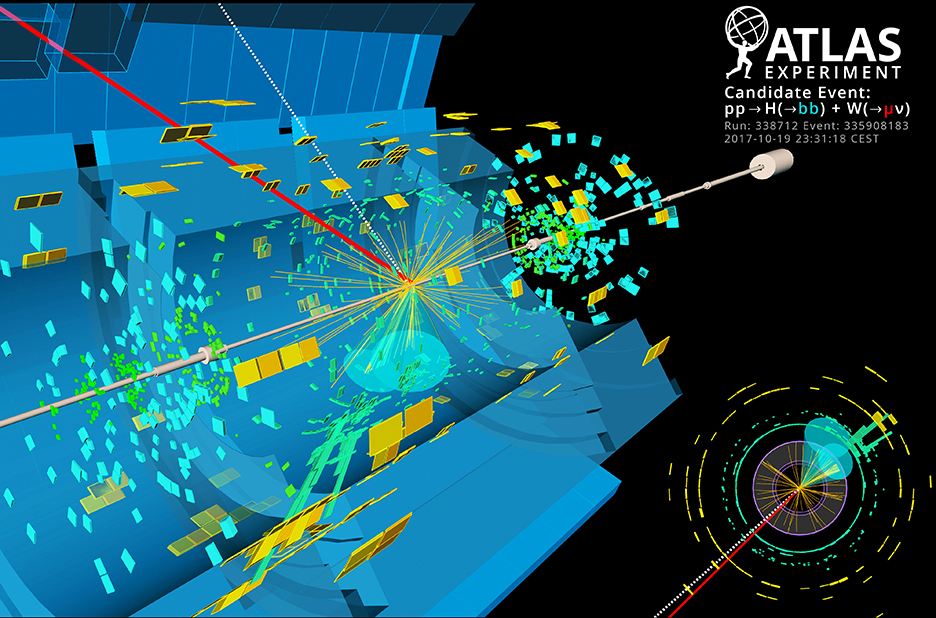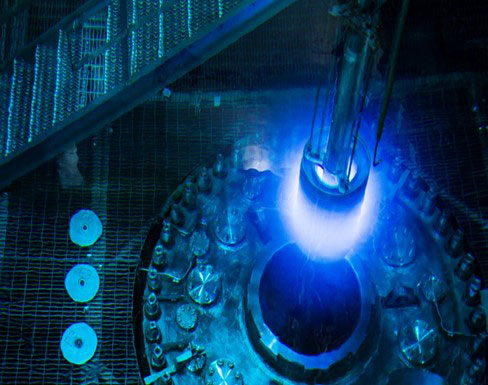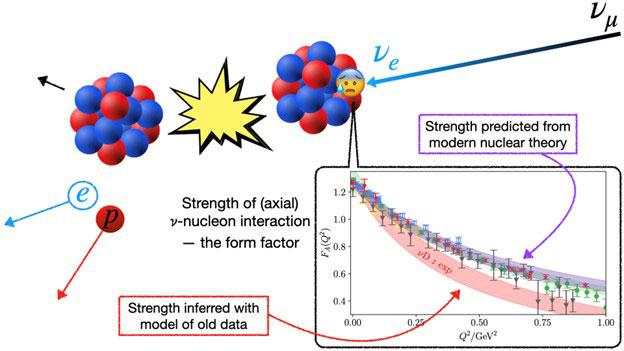ATLAS Experiment Uncovers Higgs Boson Interactions with Heaviest Quarks
New direct evidence for Higgs interactions with top and bottom quarks confirms its role in generating mass for constituents of matter.

The Science
Using the world’s most powerful particle accelerator (the Large Hadron Collider), scientists have observed Higgs bosons interacting with the heaviest quarks for the first time. This direct evidence supports two ideas. First, it supports the idea that particle interactions with the Higgs boson generate the mass of elementary particles. Second, it supports the idea that the Higgs boson plays a fundamental role in our understanding of the universe.
The Impact
In the Standard Model (which explains how the basic building blocks of matter interact), particles acquire mass by interacting with the Higgs field. The strength of this interaction with the Higgs field determines the mass of particles as well as the strength of the interaction between the particles and the Higgs boson itself. According to the Standard Model, due to its large mass, the top quark should have the strongest interaction with the Higgs boson out of all particles of matter, and the bottom quark should be next. These first observations by the ATLAS collaboration of Higgs boson interactions with top and bottom quarks confirm this prediction. These new results pave the way toward higher precision measurements of the coupling strength to top and bottom quarks, which will provide a unique window in the ongoing search for physics beyond the Standard Model.
Summary
The discovery of the Higgs boson by the ATLAS and CMS collaborations at the Large Hadron Collider in 2012 relied on the observation of Higgs bosons decaying into pairs of photons and W or Z bosons, the force carriers of electromagnetic and weak interactions, respectively. Since then, scientists have studied intensely the properties of the Higgs boson primarily with the decay processes that made the discovery possible. However, these processes only account for about 30 percent of all Higgs boson decays; the rest are predicted to consist of decays to matter particles: quarks and leptons. Higgs boson decays into bottom-quark pairs should account for nearly 60 percent of all decays but, until earlier this summer, there was no unequivocal observation of this process. At the 39th International Conference on High Energy Physics (2018), scientists from the ATLAS Collaboration reported the first observation of Higgs boson decays into pairs of bottom quarks, using data collected in 2015, 2016, and 2017. The statistical significance of the observed excess of events corresponds to 5.4 standard deviations after combining these results with those previously obtained by ATLAS. This measurement also represents the first observation of Higgs boson production in association with a W or Z boson. To reach a sufficiently high sensitivity, the analysis relies on machine learning techniques that exploit the different kinematical properties of signal and background events in eight separate event categories. Advances in tagging the presence of bottom-hadrons inside of the jets produced by the Higgs boson decay are also key to this first observation.
Earlier this year, the ATLAS Collaboration also reported the direct observation of Higgs bosons interacting with top quarks. Although top quarks are too heavy for Higgs bosons to decay into, the coupling of Higgs bosons to top quarks can be probed via Higgs boson production in association with a pair of top quarks. Observation of this rare process—about 1 percent of all Higgs boson production—is highly challenging due to the large number of particles produced in the decay and the substantial number of different ways in which known Standard Model processes may mimic the signal. As for the observation of Higgs boson decays to bottom-quark pairs, the observation of Higgs boson interactions with top quarks requires sophisticated machine learning algorithms and a dedicated bottom-tagging algorithm. The statistical significance of this observation is 6.3 standard deviations. In addition to observing Higgs boson interactions with the heaviest quarks (bottom and top), ATLAS also recently observed the decay of Higgs bosons into pairs of tau-leptons, the heaviest leptons in the Standard Model.
With the observation of Higgs boson production in association with pairs of top quarks as well as with pairs of W or Z bosons, all major Higgs boson production mechanisms have now been measured by ATLAS and the rates are so far in agreement with predictions from the Standard Model given the current measurement uncertainties. Further studies will test those predictions at a higher level of precision that allows setting stringent constraints on physics beyond the Standard Model. The Higgs boson may very well reveal some surprises ahead.
Contact
Stephane Willocq
University of Massachusetts, Amherst
willocq@physics.umass.edu
Funding
This research was funded by an international consortium. The Department of Energy, Office of Science, High Energy Physics and the National Science Foundation provided funding as did the European Organization for Nuclear Research (CERN) and research organizations in more than 30 countries.
Publications
ATLAS Collaboration, “Observation of H à bb decays and VH production with the ATLAS detector.” CERN-EP-2018-215, European Organization for Nuclear Research (CERN), Geneva, Switzerland (2018). [arXiv: 1808.08238]
ATLAS Collaboration, “Observation of Higgs boson production in association with a top quark pair at the LHC with the ATLAS detector.” Physics Letters B 784, 173 (2018). [DOI: 10.1016/j.physletb.2018.07.035]
Related Links
ATLAS press release: ATLAS observes elusive Higgs boson decay to a pair of bottom quarks
CERN press release: Long-sought decay of Higgs boson observed
ATLAS briefing: Higgs boson observed decaying to b quarks – at last!
ATLAS video: ATLAS Experiment releases new landmark study of Higgs boson
Highlight Categories
Program: HEP
Performer: University , DOE Laboratory
Additional: Collaborations , Non-DOE Interagency Collaboration , International Collaboration



